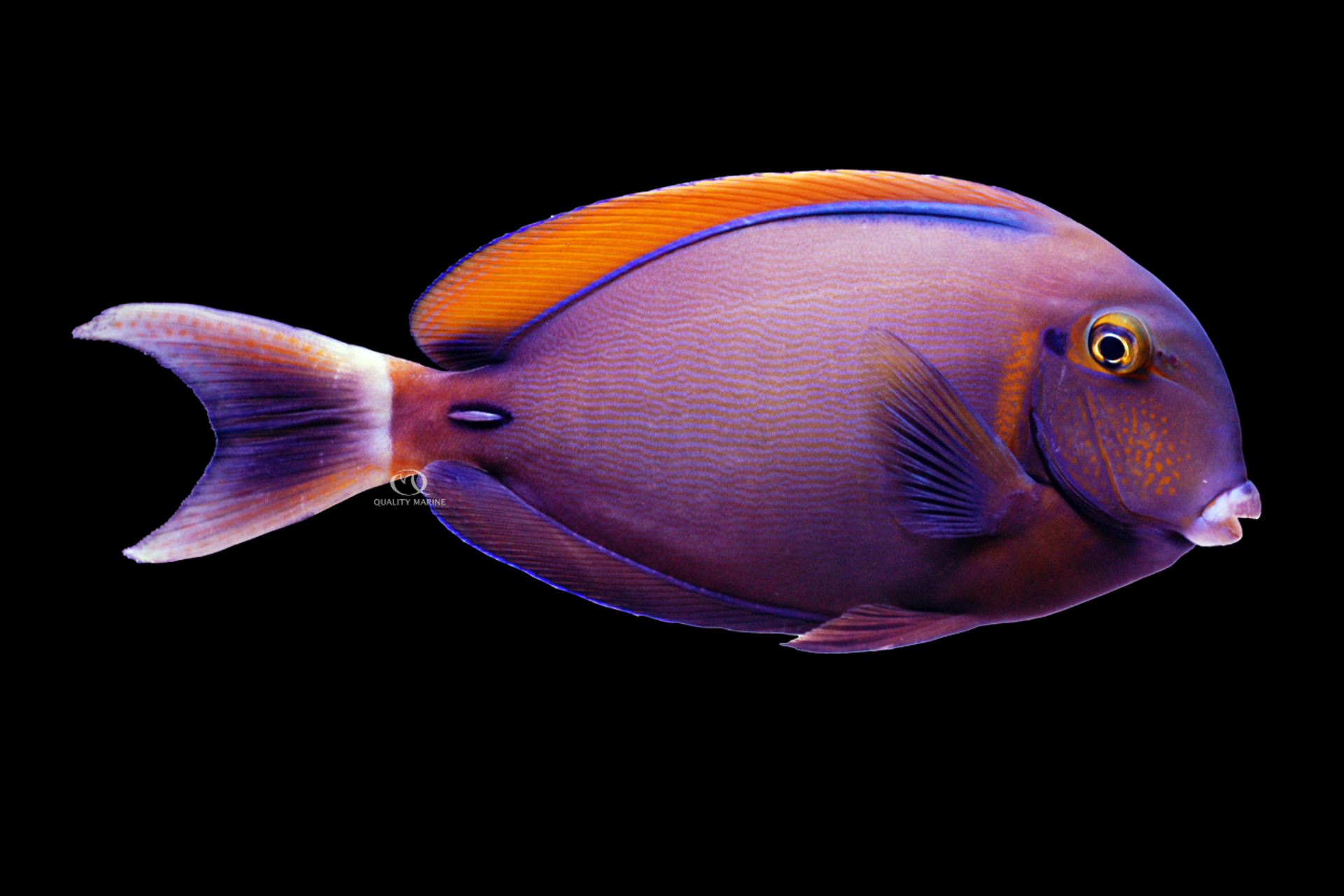Drawn To the Fish That Bears the Black Spot

There is some pirate lore about the black spot, and its usually bad news. So, it's funny that the really, truly gorgeous Black Spot Tang, should be so named for a tiny little dot that barely registers in how beautiful it is. The juvenile fish don't even have the spot, and they are somewhat plain. The adults though, shut the front door, they are mind-blowing. Imagine all the colors of the most gorgeous sunset you've ever seen, all kinds of shades of blue even metallic, with yellow and orange, then envision it in a fish, swimming around. They're finely lined in electric blue, all along their bodies and around their fins, with a sunburst of orange yellow along their dorsal fins. Then, as the piece de resistance a little black spot behind their eye that earns them the name.
Even though Black Spot Tangs aren't seen that often in aquariums, they are very common fish all over the Indo-Pacific, and have earned a few other names; in North America you'll see them called the Eye-Spot Surgeon, Round-Spot Surgeonfish, and Bariene Tangs. In the Solomon Islands, they're often called Ma'ito and we like this too. The scientific name is Acanthurus bariene. They generally live in shallow water, the juveniles prefer protected inner reef settings, and the adults prefer a more solitary life on the outer reef crest. They're usually found in less than 30 feet of water but commonly range as deeply as 120.
There's one good reason why a fish this beautiful isn't all that common in American aquariums, and we'll cut to the chase. They get big and that's really when they get super gorgeous. The biggest one on record is almost 20 inches long, a very uncommon size, even in regard to wild fish. However, you can reasonably expect them to get 15 inches long and so you're going to need a big tank. We'd recommend a minimum of 300 gallons and preferably eight feet long or more. It's totally worth it. You're going to want this tank to have a ton of flow too, in the wild, these fish would be fighting big current all day and night. Shoot for at least 20 times the tank volume in flow and more wouldn't hurt. They eat a lot, and it's messy, so filtration should also be strong, and you'll need to keep up on the water changes. By the time you have a 300-gallon tank, you probably have a dedicated water change schedule set up. Good on you. They don't need any sand, so if you want to bare-bottom that tank, this is a good fish for you.
In the wild, these fish would be all over the reef grazing on hair algae and biofilms and all the little inverts that live in there. Your captive diet should emulate this. Keeping Tangs healthy is a balancing act between getting them enough roughage and enough protein. Nutramar has your back on both fronts. We use Nutramar Nori and Ogo to get our Black Spots enough algae content. We also feed them a mix of meaty foods from Gamma like Bloodworms, Mosquito Larvae, Tubifex and Mysis. We start them on the Nutramar Complete Pellets and most of them take to it pretty quickly. This is a great way to deliver the protein and nutrition that these fish require, but don't skip the greens and reds. Very few Tangs do well without some real algae in their diet. Do not substitute lettuce or other terrestrial greens. It's not the same. Black Spot Tangs are super active and will need feeding at least twice a day.
Wild Black Spots are sometimes seen in pairs, but this isn't going to work in your aquarium unless your tank is a public aquarium (or should be). They are fine with other bold, active fish but can be very aggressive with other Black Spot Tangs and similar looking Surgeons. They're so active that they might scare timid fish into hiding, so avoid super shy tankmates like Firefish or Sifter Gobies. Black Spots are what we all consider to be reef safe, which broadly means they're very low risk to mess with your corals and other invertebrates and this is true. Unless they have algae growing on them, and if your corals have algae growing on them, we've got problems and that's another article.
The water on the reef edge that these surgeons come from is very clean and very well oxygenated. The massive flow you're already planning for will help you with the oxygenation. Keep the temperature of the tank in the low to mid 70s which will also help you maintain a higher dissolved oxygen level. Make sure you keep the pH nice and stable, within a couple tenths of 8.0. Don't let your nitrates get above 10ppm and less would be better.
If you're looking for a totally unique tang for your really quite large reef or FOWLR system, and that system is totally baller, a Black Spot Surgeon might just be the showpiece fish you've been dreaming of. Pirates be damned, this Black Spot isn't a curse, if you're lucky enough to have one, you've been blessed! We still think they should've called it the Sunset Tang instead (or maybe tequila sunrise?) If you're interested in getting one for your aquarium, have your Local Fish Store contact Quality Marine today!